Are you standing in the paint aisle, overwhelmed by the endless choices and unsure what…

What are Volatile Organic Compounds – VOCs?
VOC stands for “Volatile Organic Compound”. However, don’t let the name put you off. They’re much less technical than they sound, and even if you haven’t heard of a VOC before, you’ll certainly have inhaled one.
“Volatile” means easily evaporates, and “Organic” means that the compound contains carbon atoms, which are released into the atmosphere when the compound evaporates. You will find VOCs in many domestic household items. You’ll be able to smell some of them, like household plants, whereas others will be undetectable.
Although many VOCs are harmless, there are still a large amount of them that have adverse health effects. Some such as sputum eosinophil, methylene chloride, benzenes and, methylene chloride , have been linked to cancer and can affect your indoor air quality and cause “sick building syndrome”. This is why it is so important to be aware of VOCs in household products – including paint. Being unaware of these invisible threats could put your family’s health at risk and negatively affect your indoor air quality.
How do VOCs harm the environment?
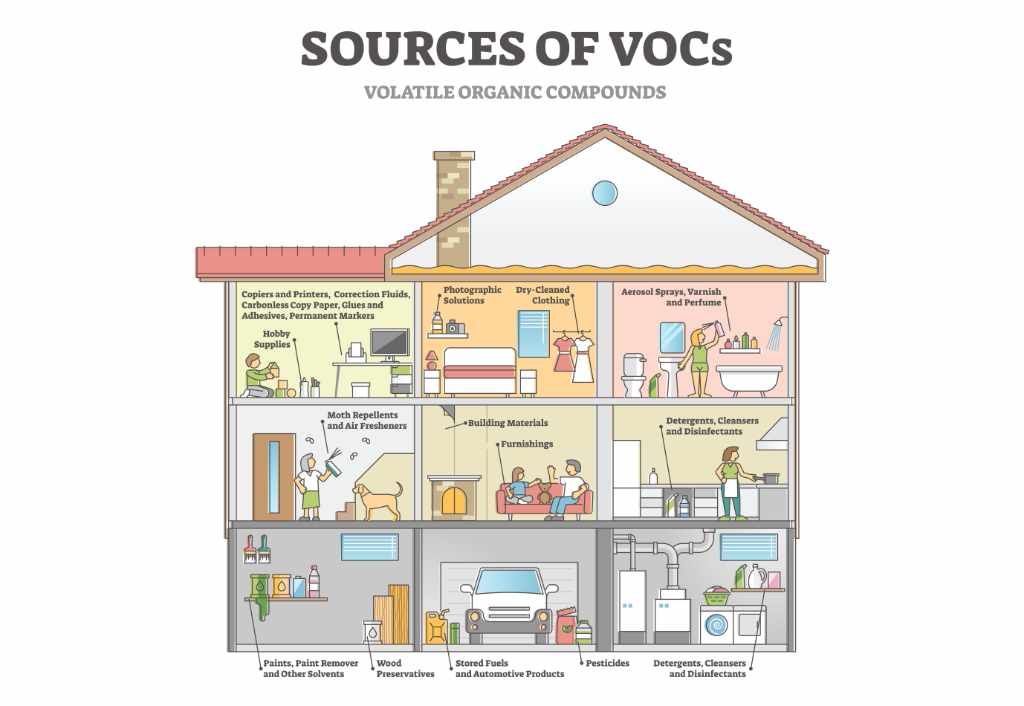
Some VOCs aren’t just harmful to us, they’re also harmful to the environment. The smog that you sometimes see above large cities is a result of volatile organic compounds in the air. Smog is an air pollutant which negatively affects air quality, and it plays a large role in the formulation of ozone.
Smog is created when volatile organic compounds are exposed to sunlight and nitrogen oxide. Nitrogen oxide is a chemical which is harmful to the environment, and it’s often emitted from vehicles, industrial sites, and power plants. You usually get a large amount of these in cities, which is why smog is more noticeable there.
When this smog is formed at ground level, it can cause disease in plant life. VOCs are also released alongside methane, which is a greenhouse gas. This contributes to global warming, heating the earth and causing multiple other problems for its inhabitants. Alongside their effects on air quality, VOCs also contribute to acid rain, which further damages plants and has other negative health effects.
What VOCs are found in paint?
Because volatile organic compounds are so varied, it would take more than one blog to list every single one that can be found in paints. However, most paints will come with a VOC warning which tells you the level VOCs that have been used in them. You can also check the back of a paint tin for a breakdown of what chemicals have been used. One of the most commonly used VOCs in paint is Formaldehyde, which is added to stop bacterial and fungal growth. There is also sputum eosinophil, methylene chloride, Benzenes, Glycols, Toluene and Styrene.
The main reasons for the use of volatile organic compounds in paints are for them to act as chemical solvents and chemical dryers. Chemical solvents are what cause the ingredients in paint to blend, whereas chemical driers are what make a product dry quicker (as you can guess by the name).
What do VOCs do to the environment?

Although many VOCs are natural, like the smell of pine and flowers, a lot of them are man-made and therefore harmful to the environment. These VOCs, like the ones found in household products, react with sunlight and nitrogen oxide. The result of this is low-level smog. It’s the greyish cloud that you can sometimes see above large cities.
Smog is dangerous for your health and can worsen existing respiratory problems, like asthma. It also limits visibility and can cause irritation to your eyes and to your respiratory system, which makes it harder to breathe. Low-level smog also contributes to global warming, which is one of the biggest concerns that our planet currently faces.
One of the most worrying effects of volatile organic compounds on the environment is their contribution to acid rain. Acid rain is where there is a large number of acidic compounds in the atmosphere. These acidic compounds can mix with rain, creating a nasty downpour that has an increased pH level.
Rain with a high pH level (acid rain), affects the landscape that it falls on. If it falls on a city, then it can cause health problems for its residents. If acid rain enters the sea, then it can raise the pH level there, which makes it uninhabitable for some fish. This then kills them and affects the food chain, throwing the entire ecosystem off balance.
What is the unit in which VOCs are measured?
The VOCs are measured to compare them against their TLV (Threshold Limit Value). TLV is used to measure the limit that a person can be exposed to chemicals on a daily basis without experiencing negative health effects.
There are three ways that they are measured. These are PPM (parts per million), which is the one that is most used, ug/m3 (micrograms per cubic meter), and ppb (parts per billion). You’ll find these on the back of a tin of paint. If you have any questions, then the paint manufacturer should be able to advise you further.
What levels of VOCs are in Graphenstone Paints?

At Graphenstone, the health of you personally, your indoor air quality, and the environment are our top priorities. This is why we have created a series of paints which have been specifically designed to include as low a level of volatile organic compounds as possible. Graphenstone paints have been classified as having “Trace” levels of VOCs only – the lowest you can get. You can view our full range by clicking here.
Graphenstone paints are some of the most tested and certified of any paint on the market. Certified as Indoor Air Comfort Gold, and tested to CDPH v1.2, our paints have some of the lowest emissions of any paint available. Other accreditations include the France VOC class A+, Germany (AgBB, ABG), BREEAM International, NOR and the VOC Solvent Emissions Directive.
Our volatile organic compounds documents and the results of the tests conducted on our paints can be found by clicking here.
In short, we are conscious of VOCs in our products and continually work to ensure that we maintain as few of them as possible, lots of brands offer low VOC paints, we lead the industry and offer trace VOC paints. Graphenstone paint only have trace levels of VOCs, less than 1g per litre or less than 0.1% per Kilo. We use our certification as an air quality guide, always ensuring that we’re meeting the VOC Solvent Emissions Directive and putting the health of our customers first.
Cleaning the air

When you next paint your own home or the home of a client, you shouldn’t be worried about health effects. This is why our trace level VOC paint is so important. It improves indoor air quality and prevents “SBS, Sick Building Syndrome”, which is when residents of a home or building get sick because they are inhaling too many harmful volatile organic compounds.
We have created a full range of paints which have been specifically designed and tested to include as few volatile organic compounds as possible, which is how they’ve met the EN 16516 and ISO 16000 standards and are compliant with the VOC Solvent Emissions Directive. The next time you pick up a tin of paint, put your health first by choosing one of our low VOC options here.

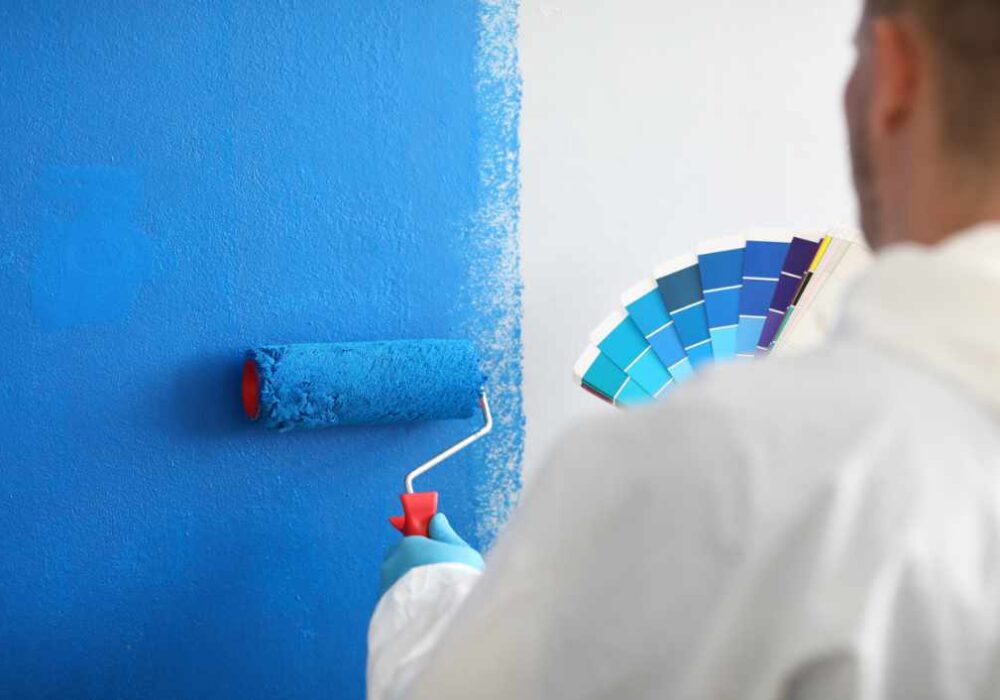
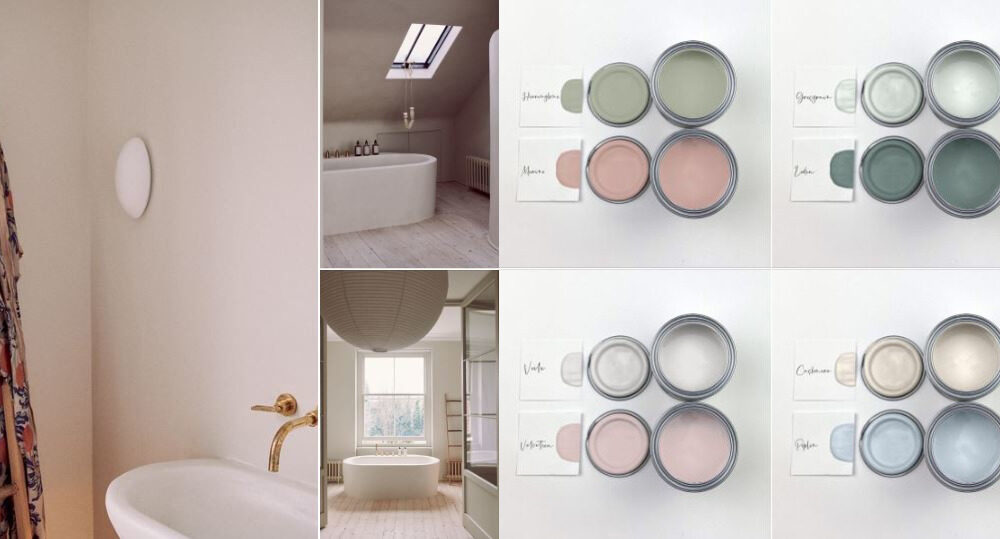


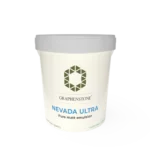
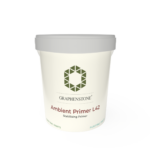
This Post Has 0 Comments